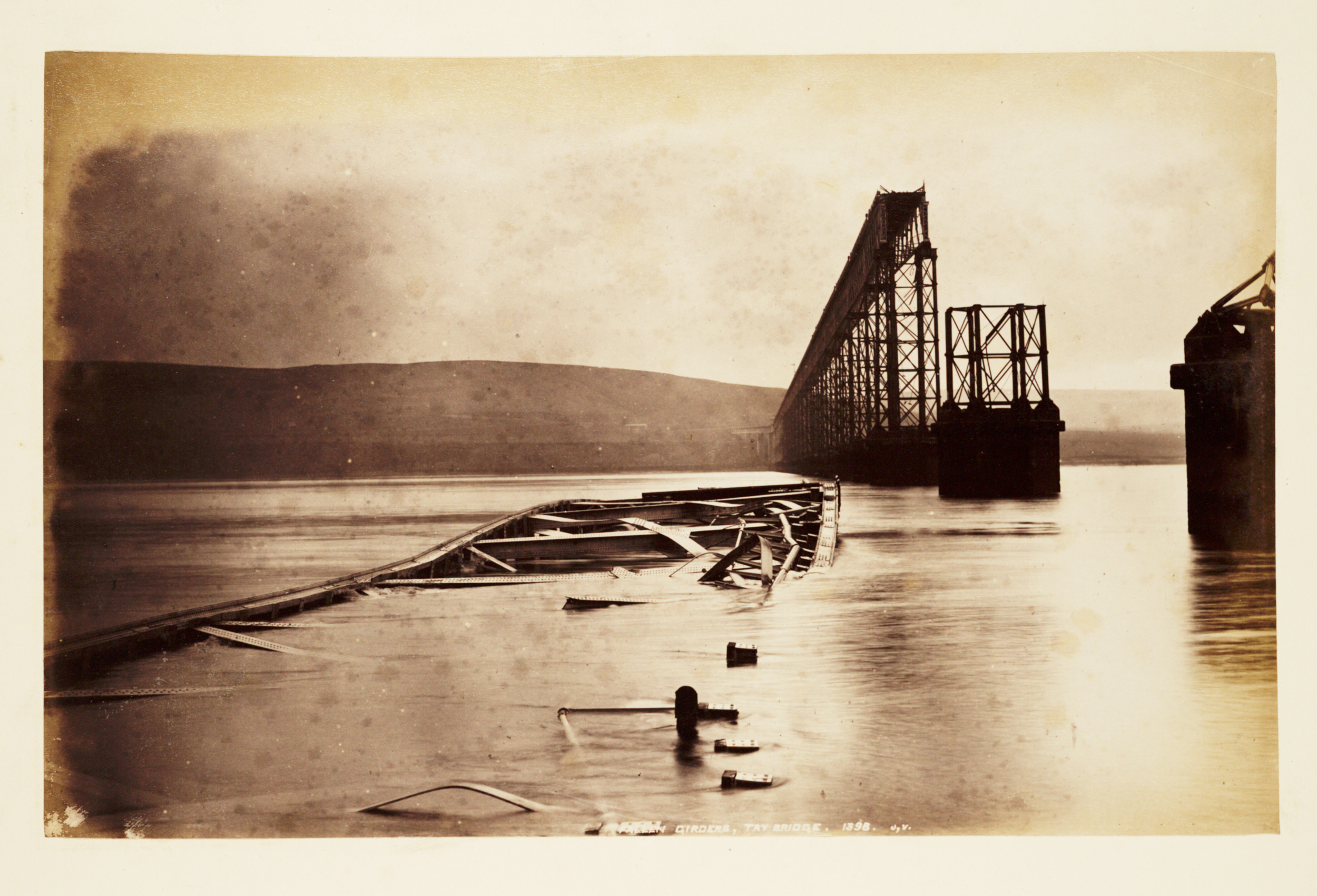Topics
Bridges
Dunkeld Bridge
- Medieval wooden bridge built in 1510; washed away in 16th century
- Before the new bridge was built, people crossed the river by ferry: one at Inver (the Inver ferry), and one downstream of Little Dunkeld Church (the East ferry); in 1766 six people drowned when the East Ferry capsized with 13 passengers and four horses
- New bridge was designed by leading engineer Thomas Telford and opened to the public in 1808
- No rock on river bed, so had to lay foundations on larch rafts 5m below riverbed; larch cut from nearby Polney wood. Sandstone for arches quarried from Gellyburn on Murthly estate; stone for rubblework sourced in local quarries to west of Birnam
- 24th June 1805: ceremony to inaugurate construction of the new bridge; all workmen had a dram of whisky; 250 men involved ; opened to public in November 1808; approved by Telford in 1809
- Costs estimated at £15,000; nearly £1m in today’s prices; government agreed to pay half the costs, and Duke of Atholl (landowner) the rest. Final costs were £34,000; the Duke imposed tolls which were paid until 1879. Charges were: one halfpenny for a person on foot; twopence for an unladen horse, fourpence when drawing a cart, eightpence for a carriage; sheep and pigs were sixpence per score; cattle one shilling and eightpence per score. Tolls raised c. £2000 per year in 1863. Tolls were very unpopular: Anti toll riots 1868; had to pay toll to reach station (train arrived 1856). Toll gates sometimes flung into river. The old tollhouse is still there on Birnam side.
- Town jail situated under the bridge on the Dunkeld side
Telford’s Bridge at Dunkeld: a brief history
The building of Telford’s Bridge at Dunkeld, Perthshire
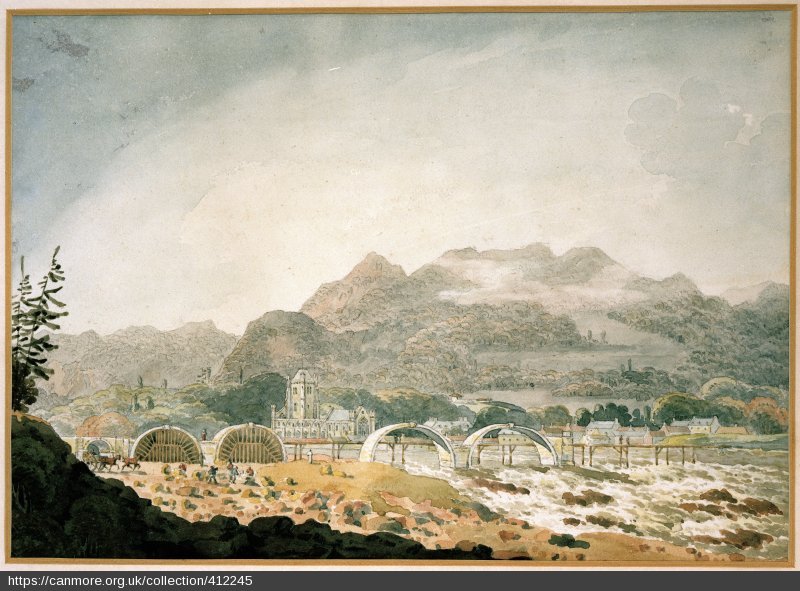
Plans for Dunkeld Bridge
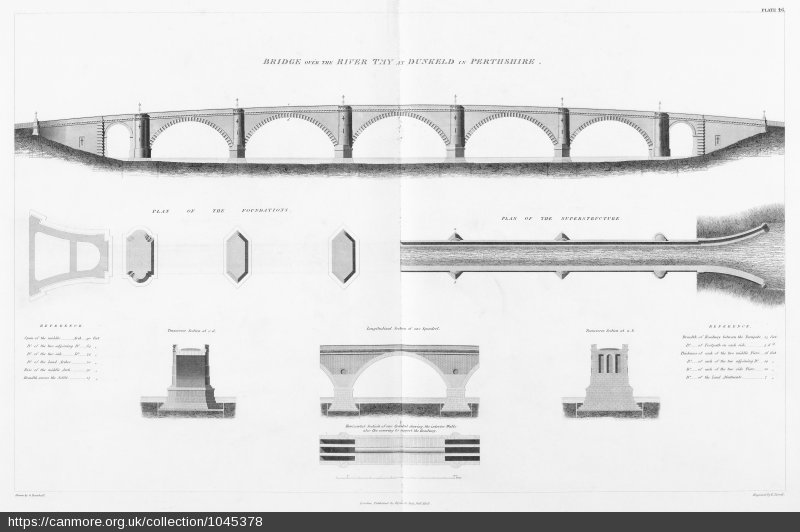
Caputh bridge
- First bridge was built in 1887 and was known as the Victoria Bridge. This was paid for by public subscription, organised by William Cox, who was heavily involved in shipping jute to Dundee.
- Built by Sir William Arrol, who rebuilt the Tay Bridge after its collapse in 1879.
- The bridge replaced the chain ferry between Murthly and Caputh. Relics of these chains and wheels still existed in the 1980s at houses in Caputh. The remains of the landing stage is still visible today on south shore of river.
- The chain ferry replaced an ordinary row boat ferry in 1820. One of the boatmen was a man known as ‘Boaty’ Proudfoot.
- Modern bridge built around 1993. Concrete piers support steel plate girders; deck of reinforced concrete.
Victoria Bridge
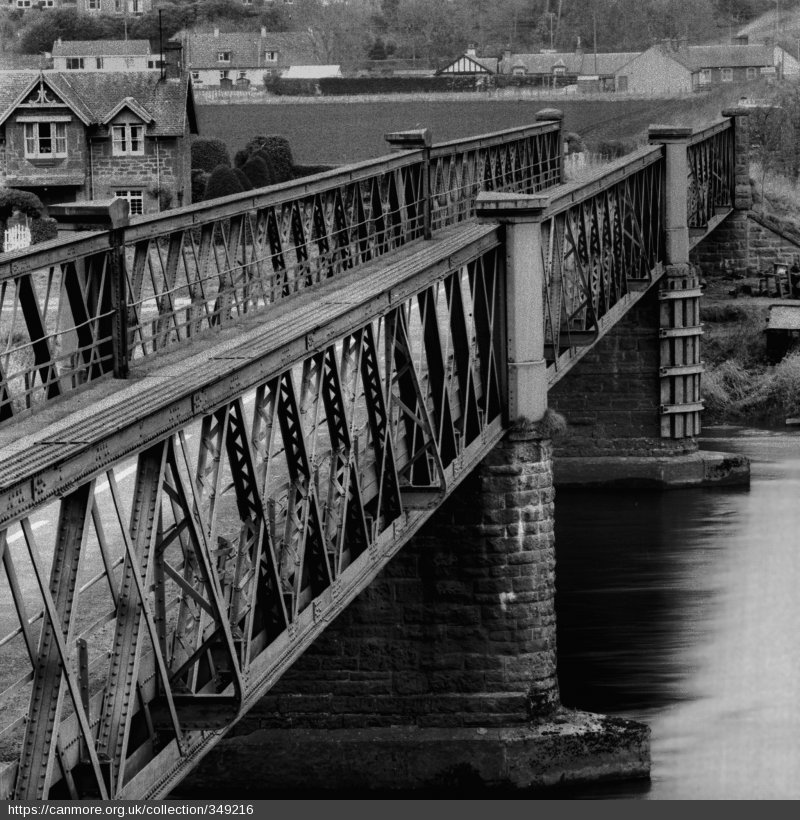
Chain ferry between Murthly and Caputh
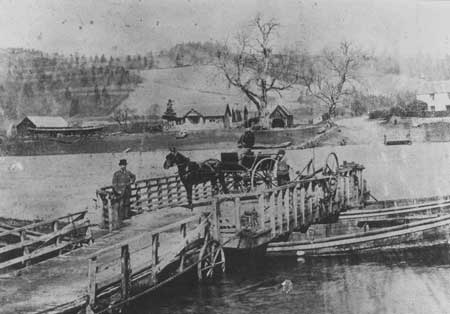
Aberfeldy Wade Bridge
- Built in 1733 by General Wade; one of over 40 bridges built in the Highlands between 1726 and 1735 as part of General Wade's 402 km of road construction 'for securing a safe and easy communication between the highlands and the trading towns of the low country' as the inscription on the bridge reads.
- At the time it was built, it was the only bridge over the Tay (earlier bridges at Dunkeld and Perth had been destroyed)
- Designed by William Adam
- Cost over £4,000, around £1m in today’s money; designed to show how powerful the British government was; includes the royal crest GIIR – King George II.
- Bridge replaced a ferry: town’s motto is "S Dluth Tric Bat Abairpheallaidh", meaning "Swift and often as the boat to Aberfeldy"
Plans of Wade's bridge at Aberfeldy

A poet visits Aberfeldy
In 1819 a poet called Robert Southey travelled through Scotland with the engineer Thomas Telford. Here are their thoughts on Wade’s bridge at Aberfeldy:
‘Aberfeldy is a place that might properly be called Aberfilthy, for marvelously foul it is. You enter through a beggarly street and arrive at a dirty inn. A sort of square or market place has been lately built, so that mean as the village or townlet is, it seems to be thriving…Near Aberfeldy is a bridge over the Tay, built by General Wade…. At a distance it looks well but makes a wretched appearance upon closer inspection. There are four unmeaning obelisks upon the central arch, and the parapet is so high that you cannot see over it. The foundations are also very insecure, for we went into the bed of the river and examined them.’
Aberfeldy footbridge
- This is the world’s first all-plastic footbridge!
- Built in 1990 to connect two parts of a golf course over the Tay
- It is three-span cable stay structure, which means that it has three parts and is suspended from cables
- The towers from which the cables are suspended are 17m tall A-frames
- It is a famously ‘bouncy’ bridge, very easy to set in motion!
Friarton Bridge
- Built in 1978 to carry the motorway now known as the M90 over the Tay
- It is a steel box girder bridge: the main beams of the bridge are formed of girders in the shape of a hollow box
- The ‘deck’ which carries the road is made of concrete.
Friarton Bridge
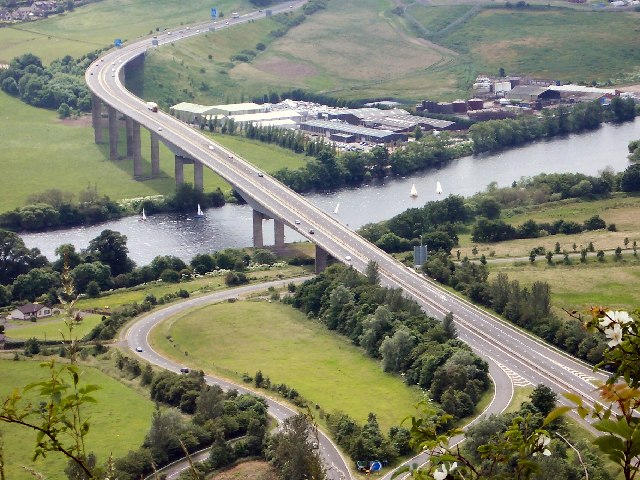
Smeaton’s Bridge (also known as The Old Bridge, the Auld Brig, Perth Bridge)
- There was a bridge over the Tay at Perth from 12th century, but after floods swept away the bridge in 1621 there was no bridge for 150 years.
- Bridge shown on Pont’s map of 1600 but not on Roy’s map of 1750; Pont’s bridge shown about 200m downstream of the present bridge
- Construction began in 1766, finished in 1771
- Originally there was a toll of one halfpenny
- Named after its designer, leading engineer John Smeaton
- In February 1774 broken ice became wedged under its arches and created a dam which flooded large sections of Perth, but the bridge remained strong.
- Marks showing flood levels can be seen on one of its piers (supports)
- It was widened and altered in 1869 to cope with a rise in traffic
- Two of the nine arches are on land, in readiness for any flooding.
- Before the bridge was built people crossed the river on one of 30 ferries, moored on shore below Kinnoull Parish Church
Smeaton’s bridge from above
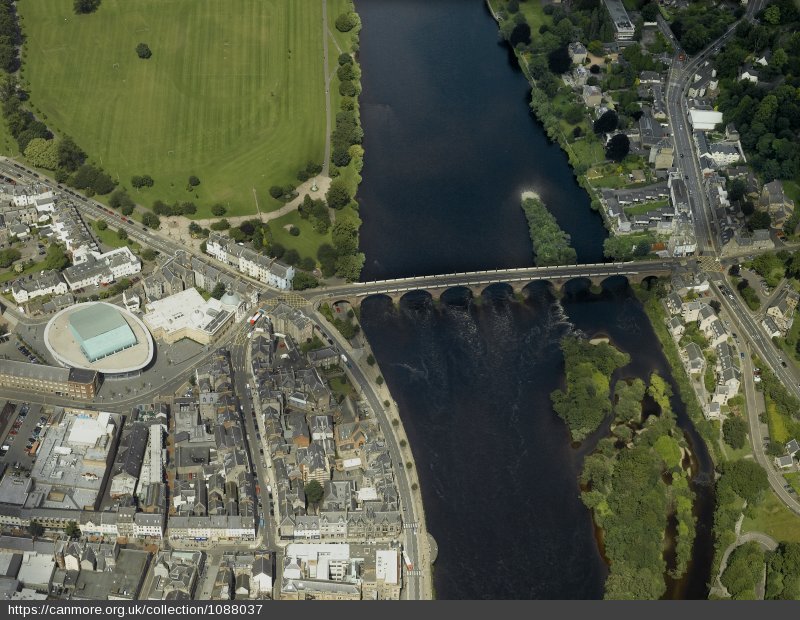
Smeaton’s bridge in 1840
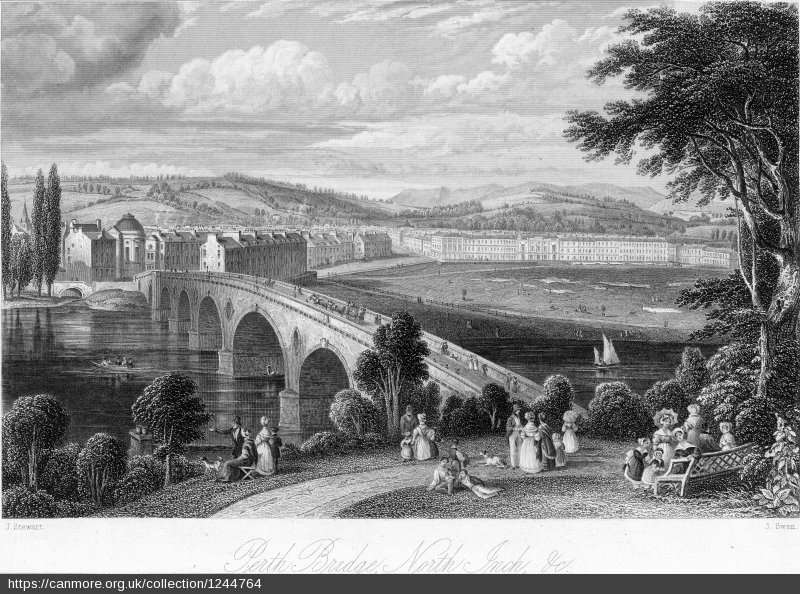
Queen’s bridge, Perth
- This was built in 1960 to replace the older Victoria Bridge (built in 1900-1902). During construction, the old bridge was raised by 2m, and the new built was built below it in order that traffic could continue to cross the river.
- It is built of reinforced concrete with two piers.
The opening of Queen’s Bridge, 1960
Tay Rail bridge, Dundee
- First rail bridge opened in 1878; the longest bridge in the world
- Collapsed in high winds in 1879 when a train with six carriages was crossing; all 75 passengers and crew were killed
- Stumps from piers of original bridge can still be seen today
- Replacement bridge built and opened in 1887
Original Tay Rail Bridge
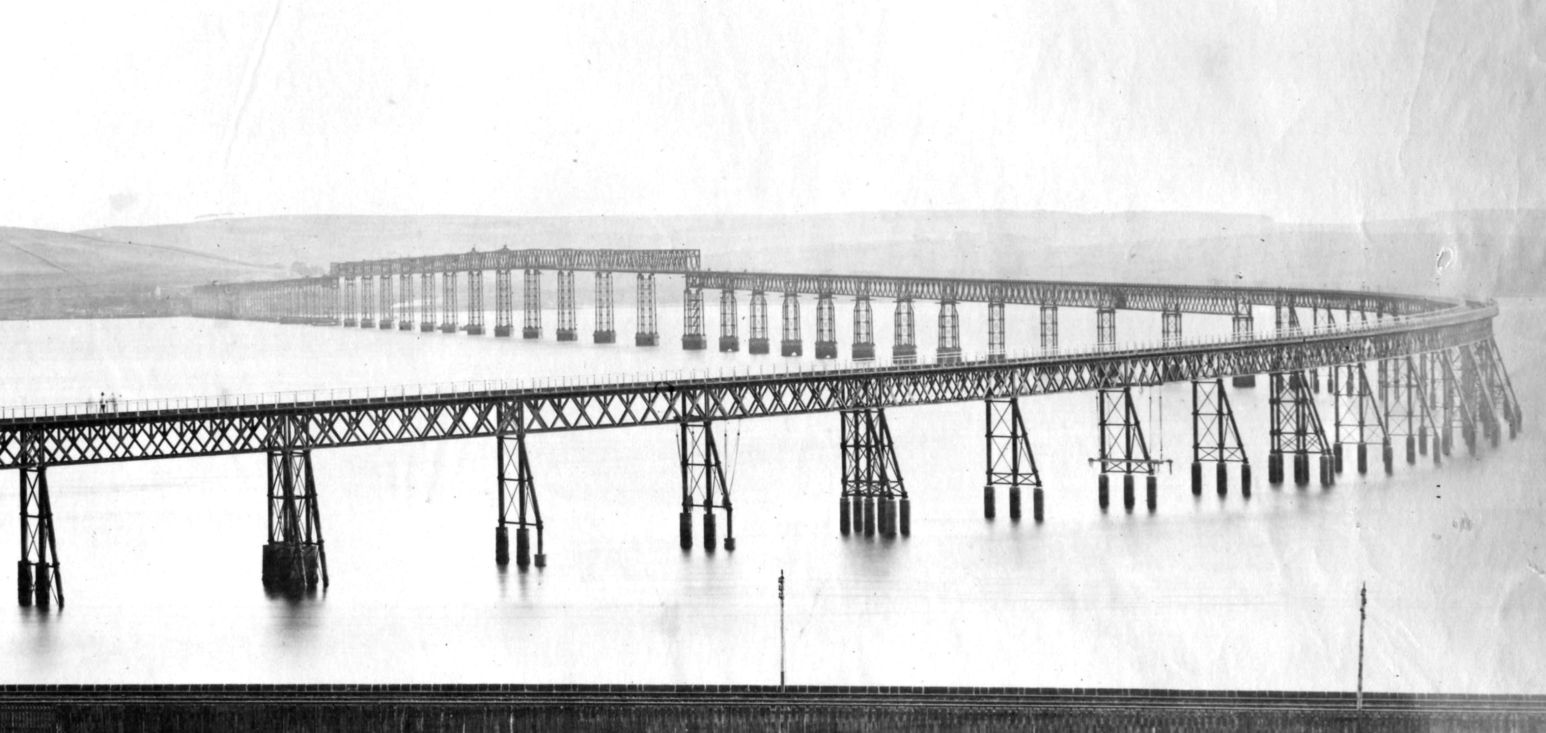
Rescue attempts
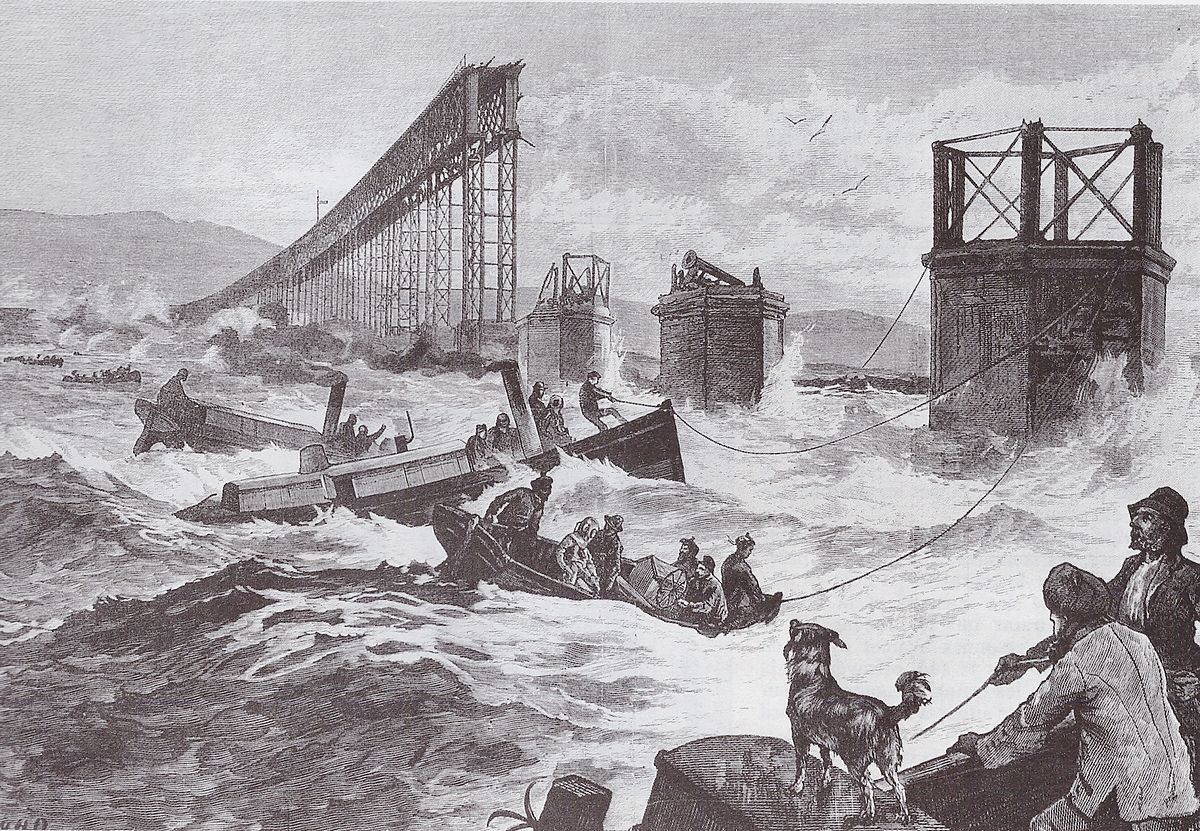
Girders down
